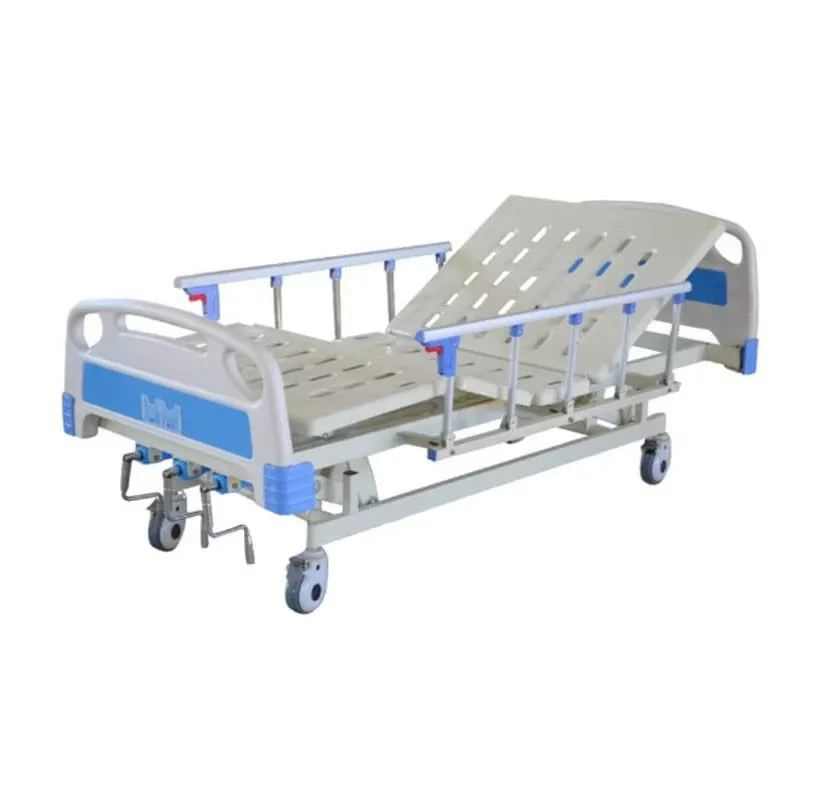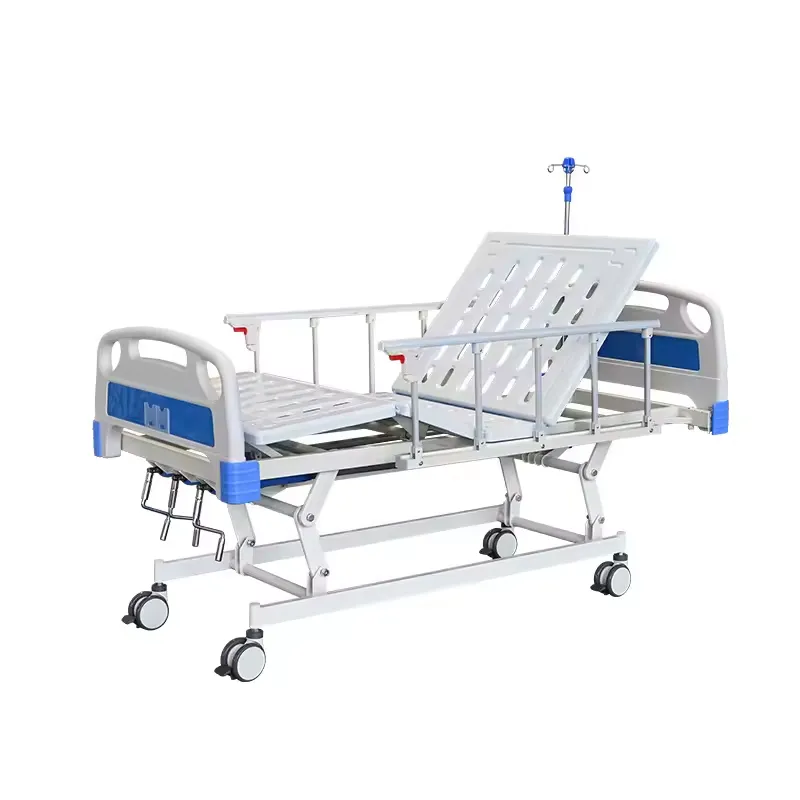Five Function ICU Bed | Electric, Safe, Durable OEM Factory
Buying Guide: What a five-function ICU bed really means (and a field-tested alternative)
If you’re searching for a five function icu bed, you’ve probably noticed two things: prices jump fast above entry-level models, and the spec sheets can read like avionics manuals. I’ve spent too many afternoons in ICUs comparing control panels and caster locks, and, to be honest, the gap between “marketing” and “reality” can be wide.
Here’s the straight talk. A true five function icu bed usually includes: backrest up/down, kneerest up/down, height adjustment, Trendelenburg, and reverse Trendelenburg. The model I recently evaluated—the Adjustable 3 Cranks Hospital Bed from Zhouhu Village, Jizhou Zone, Hengshui City, Hebei, China—covers the core clinical needs: backrest up, kneerest up, auto-contour, and height adjustment. It’s manual (3 cranks), budget-conscious, and—surprisingly—sturdy. If you can live without powered Trend/Reverse Trend, it’s a serious contender for step-down and high-dependency wards.

Key specifications (real-world focused)
| Product | Adjustable 3 Cranks Hospital Bed (manual) |
| Functions | Backrest up, Kneerest up, Auto-contour, Bed height adjustment |
| Frame / Platform | Powder-coated steel frame; ABS head/foot boards (typical) |
| Safe Working Load | ≈ 220–250 kg (varies by configuration; check data sheet) |
| Back/Knee Angles | Backrest ≈ 0–70°, Kneerest ≈ 0–40° (real-world use may vary) |
| Wheels & Brakes | 125 mm casters with diagonal locking (common spec) |
| Standards Targeted | IEC 60601-2-52 (hospital beds), ISO 14971 (risk) |
For units that truly require Trend/Reverse Trend, you’ll want an electric five function icu bed. For mixed-acuity wards, this 3-crank model hits the value/utility sweet spot.

Process flow and quality checkpoints
- Materials: high-tensile steel chassis, ABS or PP rails/boards, medical-grade powder coat (≥70 μm) for corrosion resistance.
- Fabrication: CNC tube cutting, robotic welding, phosphating pre-treatment, electrostatic powder spray; curing at controlled temp.
- Testing: static load test ≈ 3–4× rated load; endurance 10,000 crank cycles; caster roll/lock test; saline/sweat resistance (ASTM B117 salt-spray 48–96 h typical).
- Safety: pinch-point guards; side-rail latch cycle tests; optional CPR quick-release on backrest.
- Service life: ≈ 5–10 years with annual maintenance; spares availability is key.
- Industries served: acute care, step-down, long-term care, emergency surge capacity.
Where it fits: day-to-day usage scenarios
Post-op recovery, respiratory cases requiring frequent repositioning, and pressure-injury prevention protocols (auto-contour helps) are all solid matches. In an ICU where caregivers pivot patients hourly, an electric five function icu bed reduces strain; elsewhere, a manual platform can be the pragmatic choice—budget wins, maintenance is simpler, downtime is lower.

Vendor comparison (field-notes version)
| Vendor | Strengths | Watch-outs |
|---|---|---|
| ZHAOFA Medical (Hebei, China) | Cost-effective, robust steelwork, fast lead times for volume | Confirm documentation set (IEC 60601-2-52 test reports, UDI/CE) |
| Local Importer (generic) | On-site service, spare parts nearby | Price premium; model changes by batch |
| Premium EU Brand | Top ergonomics, full electric five function icu bed suite, integrated scales | High capex; longer spare cycles |
Customization and options
Common add-ons: fold-down ABS rails, 125–150 mm anti-static casters, central brake, IV poles, urine bag hooks, battery backup (for electric variants), and CPR backrest release. If your protocol demands full five function icu bed capabilities, ask for the electric chassis with Trend/Reverse Trend modules and audit the certification pack.
Quick case snapshots
- County hospital (surgical ward): switched 20 beds to 3-crank units; nurses reported “lighter maintenance load,” and finance liked the 35–45% capex savings.
- Private ICU: stayed with full-electric five function icu bed platforms due to proning protocols and frequent Trend adjustments—right call.

Certifications and test data to request
Ask vendors for: IEC 60601-2-52 compliance test reports; ISO 14971 risk file; electrical safety (for powered beds); biocompatibility for patient-contact plastics; corrosion test summaries; and load/endurance test results with sample sizes. Documentation quality often correlates with after-sales reliability, in my experience.
References:
- IEC 60601-2-52: Particular requirements for basic safety and essential performance of medical beds. https://webstore.iec.ch/
- ISO 14971: Medical devices—Application of risk management to medical devices. https://www.iso.org/standard/72704.html
- WHO Patient Safety resources on medical device selection (hospital beds). https://www.who.int/




































